Description: War Thunder is a next generation military MMO game dedicated to...

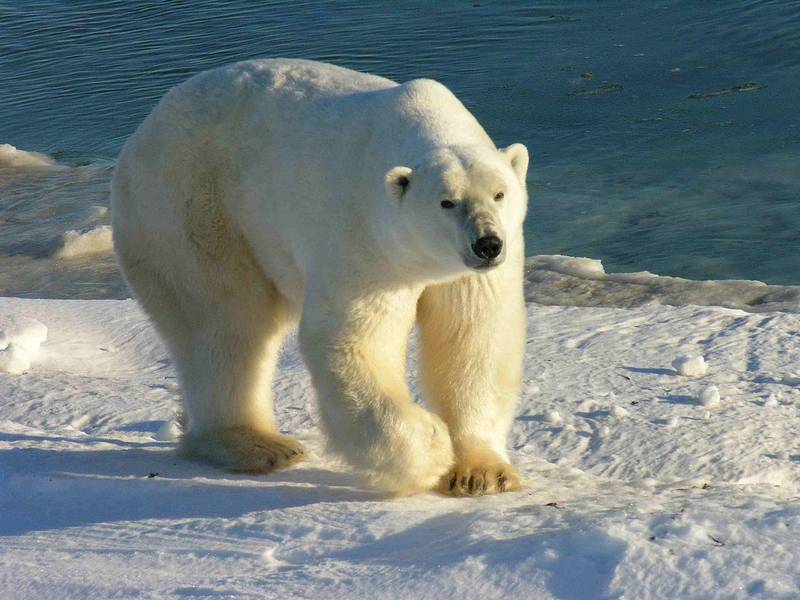
Polar bear, he is polar or northern Bear(lat. Ursus maritimus) is a predatory mammal that belongs to the canine suborder, the bear family,. The name of the beast is translated from Latin as “sea bear”, and the predator is also called oshkuy, nanuk or umka.
International scientific name: Ursus maritimus (Phipps, 1774).
conservation status: vulnerable view.
The polar bear is the largest land predator and one of the most large predators planet, which is second in size only to the elephant seal. The largest polar bear weighed just over 1 ton and was about 3 meters long. The height of this bear, standing on its hind legs, was 3.39 m. On average, the body length of males is about 2-2.5 m, the height at the withers is from 1.3 to 1.5 m, and the average weight polar bear varies between 400-800 kg. Bears are 1.5-2 times smaller, usually their weight does not exceed 200-300 kg, although pregnant females can weigh up to 500 kg. Interestingly, in the Pleistocene era (about 100 thousand years ago), a giant polar bear lived on earth, its size was about 4 meters in length, and its body weight reached 1.2 tons.

The polar bear has a heavy, massive body and large, powerful paws. Unlike other representatives of the genus, the neck of polar bears is elongated, and the head with small ears has a flattened shape, but with an elongated facial region characteristic of all bears. The jaws of the beast are extremely powerful, with well-developed, sharp fangs and incisors. In total, a polar bear has 42 teeth. Facial vibrissae are absent in animals.
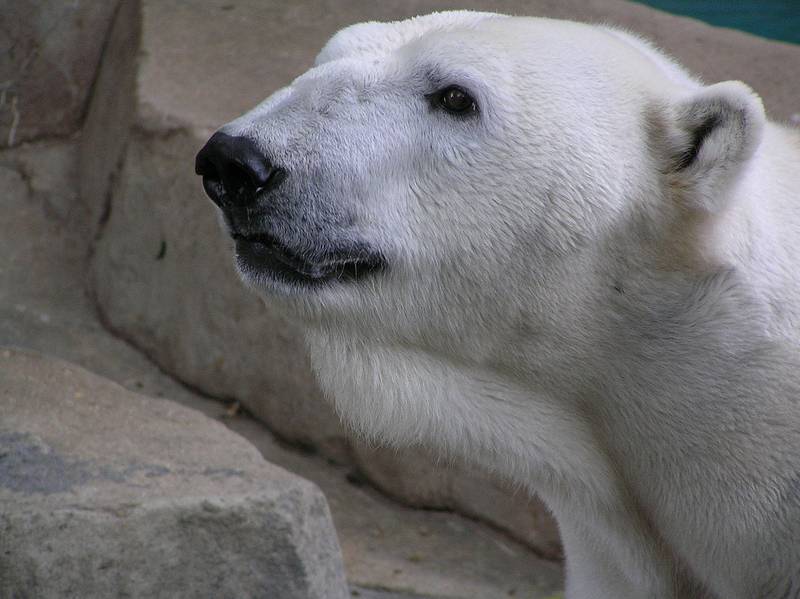
The tail of a polar bear is very short, has a length of 7 to 13 cm and is almost invisible from under thick fur. The paws of the polar bear end in five fingers, armed with sharp non-retractable claws of impressive size, which allows predators to hold the largest and strongest prey. The soles of the paws are covered with coarse wool, which prevents slipping on ice floes and does not allow the paws to freeze. Besides, White bears they swim and dive well, and between their fingers there is a swimming membrane that helps with long swims.
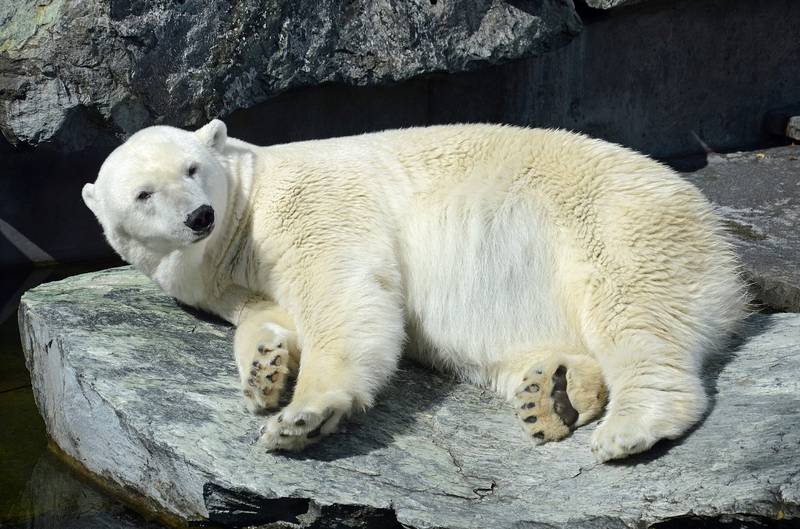
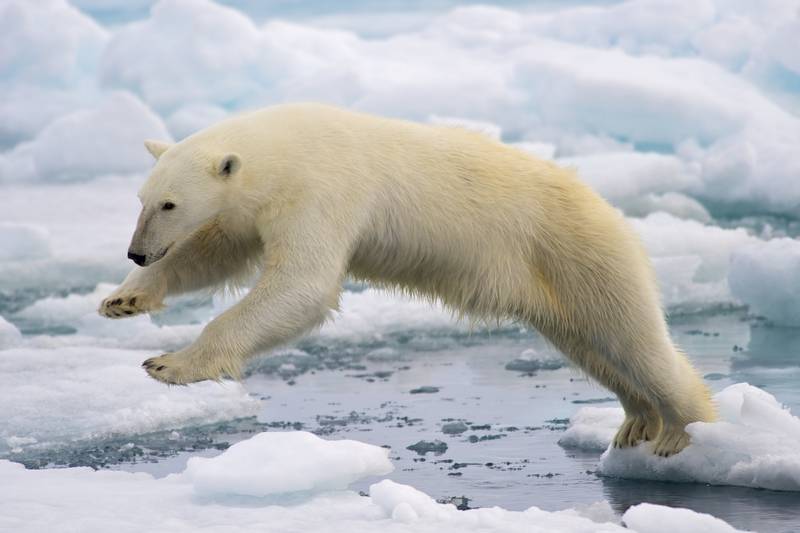
Polar bears are powerful and hardy predators, very agile and fast for their weight and impressive size. On land, the speed of a polar bear averages 5.6 km / h, and when running it reaches 40 km / h. During the day, the animal can cover a distance of up to 20 km. A polar bear pursued in water is capable of accelerating up to 6.5-7 km/h, and if necessary it can swim without stopping for several days. A fact is known when a female polar bear swam non-stop to the feeding place for 9 days, although during this time she lost up to 22% of her body weight and her cub.
Polar predators have well-developed hearing, sight and smell. The animal senses the prey at a distance of more than 1 kilometer, and standing over the shelter of potential prey, it is able to catch the slightest movement. Through a meter layer of snow, a polar bear can smell the place of the seal's air (holes in the ice, with the help of which the seal breathes).
AT natural conditions polar bears live for about 20-30 years (males up to 20 years, females up to 25-30 years), and the recorded life expectancy record in captivity is 45 years.
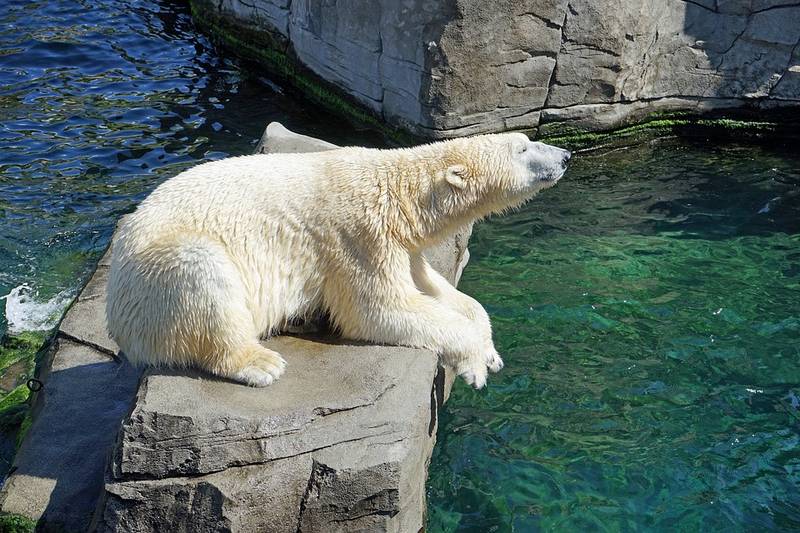
Polar bears live in the subpolar regions of the northern hemisphere, and their range extends to 88 degrees north latitude in the north and Newfoundland in the south. The distribution area on the mainland passes through the Arctic deserts to the tundra zone in the territories of Russia, Greenland, the USA and Canada. The range of animals is closely connected with the Arctic belt, covered with drifting and multi-year ice, abounding in large polynyas with high density marine mammals, the main food source of polar bears.
Today, the habitat of polar bears has several large populations:
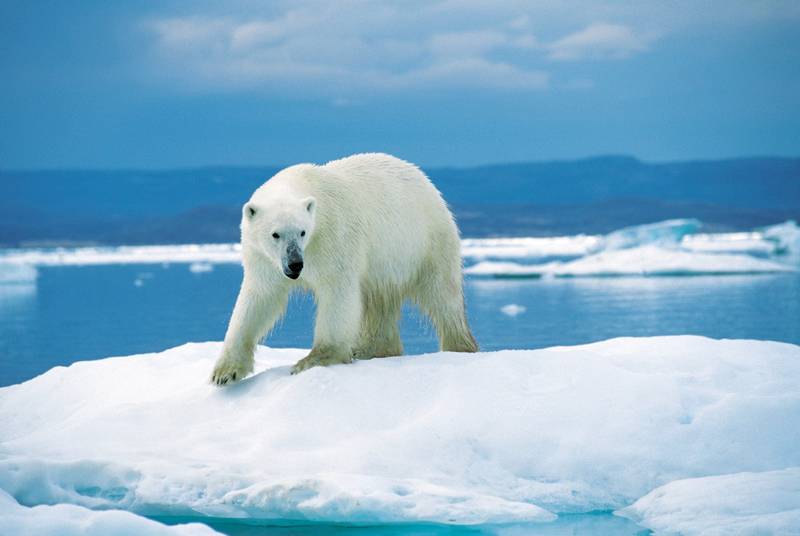
In the north, the distribution area of \u200b\u200bpopulations captures part of the Arctic basin, although polar bears are much less common here than in more southerly seas. Interestingly, the largest polar bears live in the Barents Sea, while the smallest ones live on the island of Svalbard.
The existence of predators is tied to seasonal changes in borders polar ice. With the onset of heat, polar bears retreat to the pole along with ice, and in winter they return south, and although their usual environment is coastal areas covered with ice, predators often visit the mainland at this time.
First of all, pregnant females hibernate, the rest of the polar bears winter in the den not every year and at the same time fall into suspended animation for no more than 50-80 days.
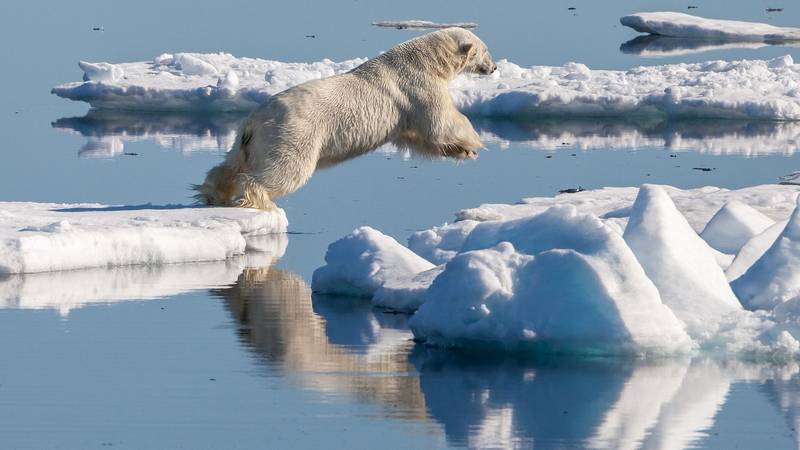
The main food source of the polar bear is various marine mammals and fish (seal, ringed seal, less often bearded seal (sea hare), walrus, white whale, narwhal).
First of all, the polar bear eats the skin and fat of the killed victim, and only when very hungry does it eat the meat of its prey. Thanks to this diet, a huge amount of vitamin A enters the animal's body, which accumulates in the liver. At one time, an adult polar bear eats about 6-8 kg of food, and when very hungry - up to 20 kg. The remnants of the meal are eaten up by arctic foxes, eternal guides and freeloaders of the polar bear. In case of an unsuccessful hunt, animals are content with dead fish, carrion, ruin bird nests, eating eggs and chicks. Polar bears are quite tolerant of their relatives when eating big booty, for example, a dead one, near which it can gather large group predators. Wandering to the mainland, polar bears willingly dig in the garbage in search of food waste and rob food warehouses of polar expeditions. The plant diet of predators consists of grasses and algae.
By the way, polar bears do not eat penguins, since penguins live in the Southern Hemisphere (in Antarctica, South Africa, Australia, New Zealand, South America, on the islands), while polar bears live in the Northern Hemisphere (in northern Russia, Canada, Alaska, Greenland and some islands).
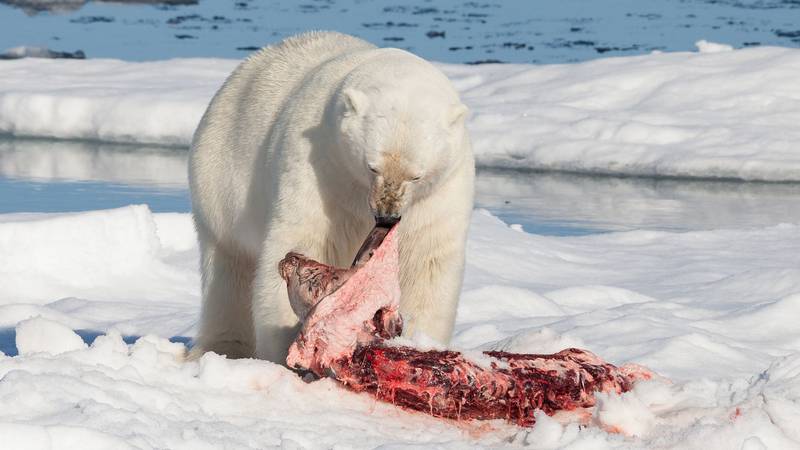
In summer, the ice recedes from the shores and can completely melt, which deprives the animals of their feeding places. Therefore, in summer, polar bears live off their fat reserves and starve for 4 months or more. Given the lack of competition for food during this period of the year, animals can gather in groups and lie peacefully on the shore.
A unique feature of the polar bear's behavior is its attitude towards humans, whom it sometimes purposefully hunts down and treats as prey. But most often, polar bears do not show aggression at all, they are quite trusting and curious. Usually, only females with cubs or a wounded animal are dangerous to humans.
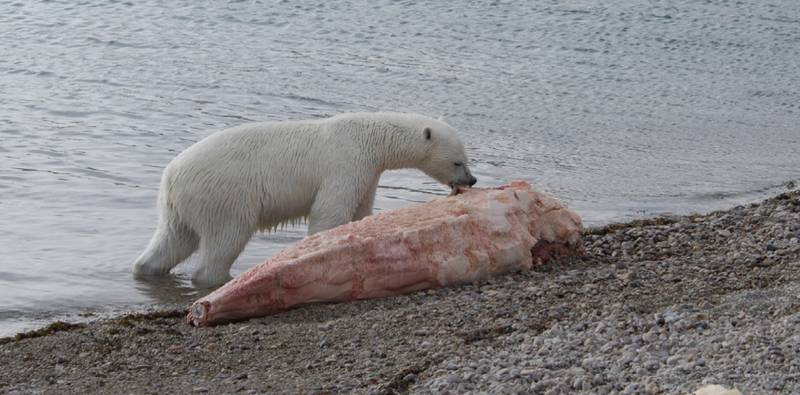
The polar bear lies in wait for potential prey near the polynya, and as soon as the head of the victim is shown above the water, it stuns the animal with a powerful blow of the paw, after which it pulls the carcass onto the ice.
Other no less effective method hunting consists in turning over the ice floe on which the seals rest. Often, polar bears hunt walruses, especially young and weak ones, but they can only cope with an enemy armed with deadly tusks on ice. The bear sneaks up to prey at a distance of about 9-12 meters, and then attacks the victim with a sharp jump.
When a polar bear discovers seal vents (holes in the ice through which seals breathe), it tries to expand them by breaking the ice with its front paws. Then he plunges the front of his body into the water, grabs the seal sharp teeth and pulls him onto the ice, after which the victim can no longer cope with an unequal opponent.
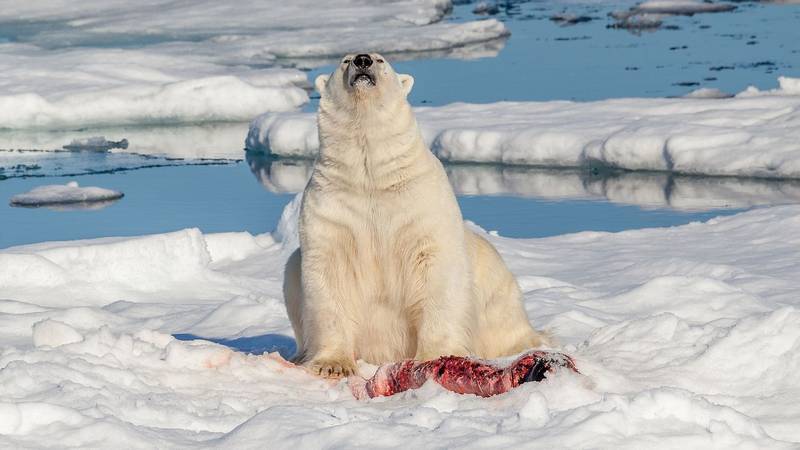
Northern bears lead a solitary lifestyle and treat their relatives quite peacefully, fights between males occur only during the breeding season, at the same time aggressive males can attack cubs.
Polar bears reach reproductive age by 4-8 years old, and females become ready for the reproduction of offspring earlier than males. The bear rut is extended in time and lasts from late March to early June, and the female is usually accompanied by 3-4, sometimes up to 7 males. The pregnancy of polar bears lasts from 230 to 250 days (about 8 months), and it begins with a latent stage, when the implantation of the embryo is delayed.
In October, female polar bears begin to dig dens in snow drifts, and they choose certain places for this: for example, on the Wrangel Islands and Franz Josef Land, where up to 150-200 dens are set up in the coastal zone at the same time. In mid-November, when the embryonic development of the fetus begins, the bears go into hibernation, which lasts until April. Thus, offspring are born in the middle or at the end of the Arctic winter.
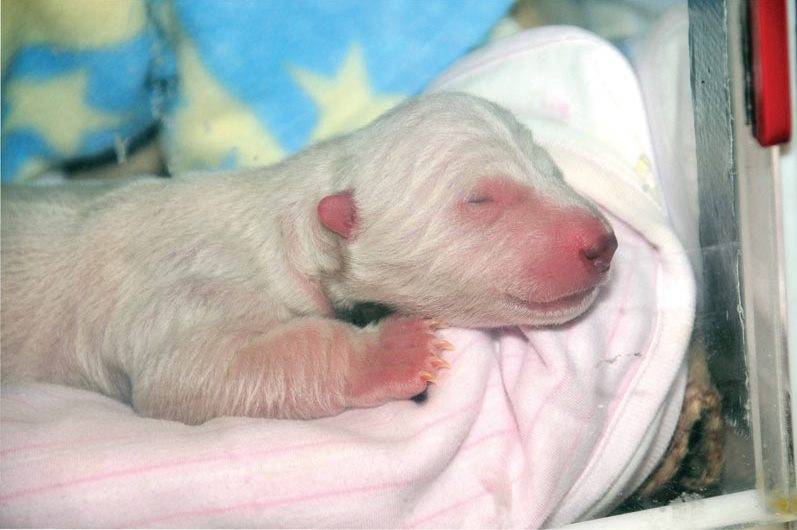
Taken from: polarbearscience.files.wordpress.com
From 1 to 3 cubs are usually born (usually 2 cubs), completely helpless and tiny, weighing from 450 to 750 g. In completely exceptional cases, 4 cubs can be born. The fur of cubs is so thin that they are often called naked. At first, the offspring intensively feeds on mother's milk. A month later, the cubs' eyes open, after another month, the little polar bears begin short sorties from the lair, and at the age of 3 months they already leave the den and, together with their mother, set off to wander through the icy expanses of the Arctic. Up to a year and a half, the cubs continue to feed on milk and are under the protection of their mother, and after that they begin an independent life. Mortality among polar bear cubs ranges from 10 to 30%.
The mother bear brings offspring 1 time in 3 years and for life cycle produces no more than 15 cubs, which indicates that the potential for increasing the population of these animals is too low.
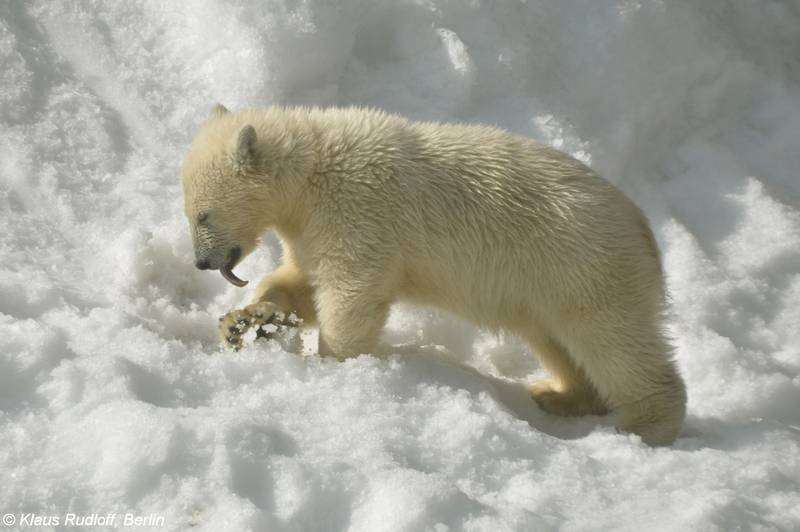
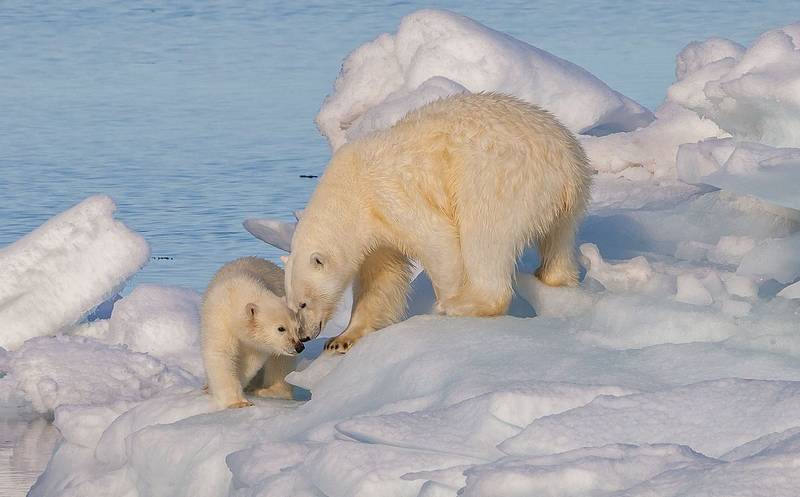
The polar bear is one of the largest representatives of the order of predators on our planet. Northern peoples call it - oshkuy, nanuk and umka.
There are individuals reaching a length of up to three meters, and weighing up to a ton. And despite such big weight polar bear, he is very fast and agile.
In the water, he swims very quickly and swims long distances. The polar bear easily overcomes difficult to overcome ice, and travels from thirty to forty kilometers a day.
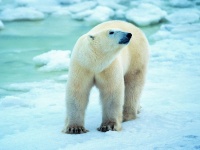
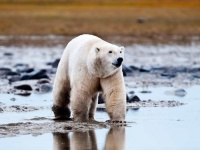
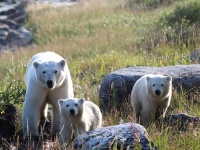
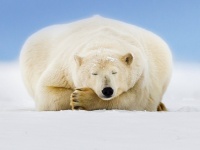 The dream of white me...
The dream of white me...
Polar bear fur is perfectly adapted to the harsh Arctic climate. It also provides warmth and fat very well, reaching up to ten centimeters in thickness with the onset of winter. Without this fat, the bears would hardly have swum eighty kilometers in icy water.
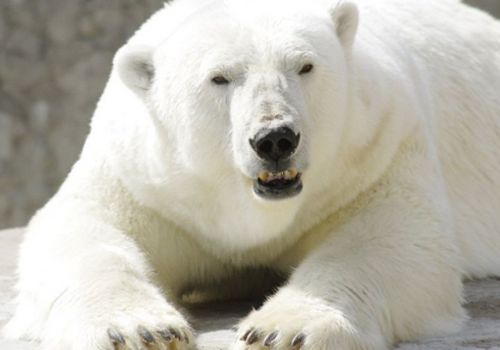
But for the most part, this beast is a loner. The exception is mothers with teenage children. In general, cubs stay with their mother for a year or even a year and a half. In this case, we can talk about group hunting. The polar bear clearly knows that the game is the one who runs away. And here the cautious bear turns into a ruthless catcher. Fleeing game awakens in him the instinct of a hunter. Often walruses and other pinnipeds become its victims in the North. Fearing the raids of the polar bear, they put up "sentinels" near the rookery. And these "sentinels" themselves often become victims. They prevent the penetration of a frisky bear deep into the herd, buy time for the rest to escape in the water.
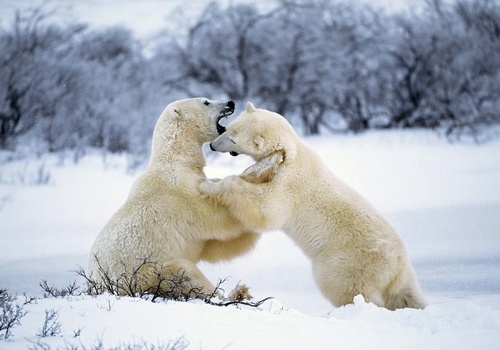
The most basic and favorite food of polar bears are seals. A bear can eat up to fifty seals a year. But it's not so easy to hunt seals. From year to year, the state of the ice changes, and seals become unpredictable. Therefore, bears have to travel thousands of kilometers to find the best place for seal hunting. In addition, bears need good skills and great patience. A bear can wait for a seal for hours at the hole. A hunting bear is often accompanied by several Arctic foxes, who crave the remains of dead animals.
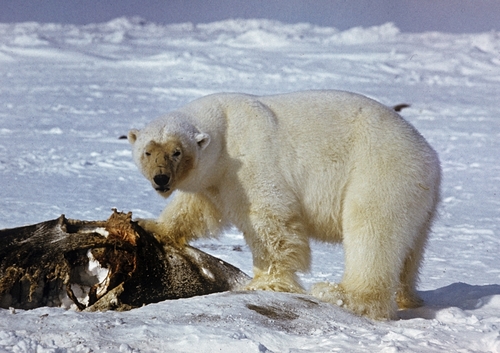
Bears not only politely bypass neighboring alien territories, but they also communicate with each other. But in such a way that no one's interests are infringed. Even in the case when the number of contenders for production is growing. Constant climate change, warming, are very disturbing to the bears. Pack ice recedes, and water, on the contrary, overwhelms the coast. In such conditions, polar bears feel bad.
There are eight species in the modern bear family. And the polar bear is among them the youngest species and at the same time the most adapted. This predator will survive in the depths of the mainland. However, it is perfectly adapted to its current habitat. The polar bear differs very much from its fellows, and from other active inhabitants too. For example, no one else wears white all year round. This is not typical of the northern fauna. And only the polar bear allows himself not to react to the season. Probably because it is the largest. So, unlike the Arctic fox, which turns brown-brown in summer, the bear is always white. But it must be said that various metamorphoses also occur with the white skin of a bear. This may be due to illness or poor nutrition.
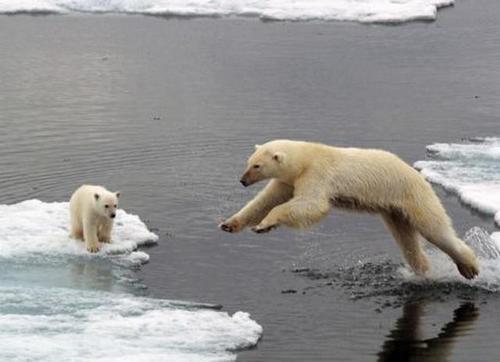
Zoologists are thoroughly familiar with the anatomy and physiology of the polar bear. It is established that the polar bear descended from a giant cave bear during the period of general icing. But his behavior has been little studied. They hunted a polar bear for more than one hundred years, but they began to study it quite recently. The issues of polar bear migration are also insufficiently studied. It is argued that the route is always laid against the drift of ice. Polar bears have very good eyesight. Maybe 10 times, or even 100 times better than a human. If a person can develop an eye disease from a long stay among the white and endless snows, then this does not happen with polar bears. He roams the tundra and looks out for black spots. Everything that stands out in color among the endless white virgin soil, the bear must check for edibility.
Polar bears, unlike brown ones, do not hibernate and do not create a den. It is almost impossible to wait out the long polar winter in hibernation. The only exceptions are pregnant females. They make a kind of lair. The mother bear finds a hill from which the wind blows and lies down. Snow from the hill inflates on the lying bear. So naturally a snowdrift is formed above the she-bear, in which she, with her body, pushing the snow apart, makes a room and stays there for the winter. In the middle of winter, bear cubs appear under the snow. In March-April, females with cubs come out.
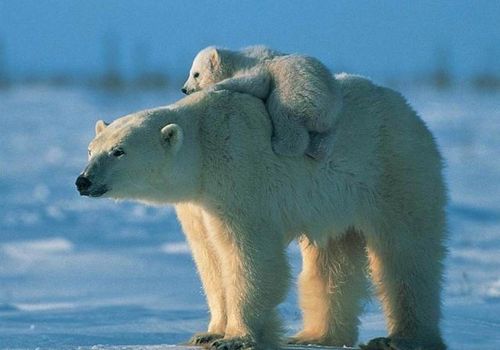
People all over the world who witnessed the exit of a she-bear with cubs from the den can be counted on the fingers of their hands. For some time, the cubs will not be able to move away not only from their mother, but also from the place where they were born. For about two or three months they will walk around the den. They will learn to hide, they will learn not to fall into the snow. And only then they will go with their mother to roam along the coast of the Arctic Ocean, and there they will learn to swim. In total, cubs will learn habits from their mother for a year or more. And only after this time, the cubs are separated.
Bears swim well and can cross the cracks formed in the frozen ocean ice. But everything has a limit. Due to global warming, open water is getting bigger and many bears, especially young ones, are drowning. They try to stay closer to the islands in the Arctic Ocean, closer to solid land.
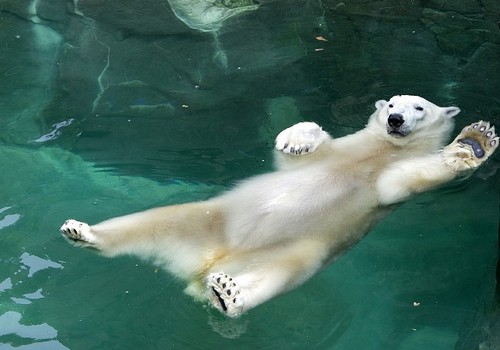
40% of a polar bear's mass is fat. With such a fat layer, he can sleep in the snow and swim in ice water for hours. It is known that the larger the body, the less it cools. And the ocean salty water remains liquid even at temperatures below zero degrees. The bear takes great care of its skin. He bathes, and after bathing he wipes himself on the snow.
The bear is large in size, but cautious. He comes to the dwellings of polar explorers in search of food. Without special need, he will not cross the borders of someone else's territory. And he won't get into a fight unless it's absolutely necessary. After all, you can get injured, and it is not easy for a wounded animal to survive.
The polar bear (Ursus maritimus) belongs to the class Mammals, order Carnivores, family Bears. Very close to canines, bears appeared about 5 million years ago. The lone lord of the Arctic, the polar bear reigns northern shores Eurasia and America on floating ice. Here is his element! All day long he wanders, passing great distances, enjoys rolling in the snow or sleeping.
Polar bears can only be classified as “terrestrial” mammals, since these animals appear very rarely on land, only on the Arctic islands and the sea coast. They spend most of their time roaming the ice of the Arctic Ocean. The polar bear is perfectly adapted to life in the polar seas. Snowstorms often occur in the Arctic. Fleeing from them, polar bears dig holes in snowdrifts, lie down in them and come out only after the storm subsides.
This is a real amphibious beast! 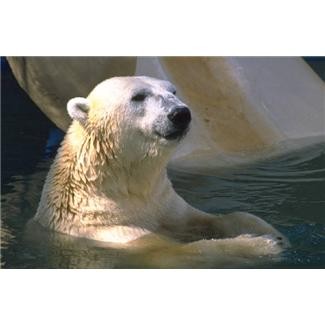
Its body has a streamlined shape: a pointed muzzle easily cuts through the water, very warm, thick fur and a layer of subcutaneous fat allow a well-swimming predator to stay in cold water for a long time, swimming long distances between ice fields. The hind legs serve as a rudder, and the front legs, densely covered with hair, form continuous rowing blades. The specific gravity of a bear's body is close to that of water. The fur in the water does not get wet and retains air, supports the body of this giant in the water, allowing you to swim for hours and even sleep without getting out onto the ice. Bears can swim 100 km from land!
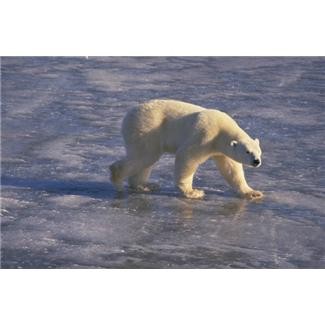
Extremely agile, it jumps over cracks up to 3.5 m wide and never breaks through the ice, as it evenly distributes its weight, spreading its paws wide.
Its coloration is protective, white fur with a yellowish tint is hardly noticeable against the background of ice and snow. The hollow hairs of the bear's fur work like light guides, through which the weak radiation of the northern sun reaches the bear's skin and warms it. Sharp curved claws help to easily climb slippery ice blocks. Polar bears even have fur on their paw pads, which allows them not to slip on the ice and warms their paws.
The polar bear is an unsurpassed hunter of sea animals. He has sharp eyesight, excellent hearing and an excellent sense of smell and is able to smell the victim, being 7 km away. With a keen sense of smell, a bear can learn a lot from the tracks left by its relatives, such as their gender or their readiness to mate.
The polar bear is selective in nutrition among the bears and is the only one of the bears who eats mainly meat. He is able to travel long distances in search of his favorite food - the seal. Polar bears have come up with different hunting techniques. Most often, they lie in wait for seals at their ventilation holes in the ice. While swimming under water, seals periodically need to take in air. For this purpose, a hole is maintained in the ice. At its edge, a polar bear guards, often for several hours.
As soon as the seal inadvertently emerges, the bear throws it out of the water with a powerful blow of its paw or jumps into the hole itself, killing the prey under water. Sometimes, in order to kill a seal, just one blow with a paw is enough. Often seals do not rest in the water, but on the edge of their holes. Then the polar bear cautiously creeps up to them. Sometimes it even crawls on its belly, hiding behind snow drifts and ice floes. However, he makes a jerk from a distance of 20-25 m. After all, if a seal finds him, he will quickly slip into the water.
In spring, female seals make burrows in the snow, almost invisible from the outside, with access to the water. In them, seals cub and leave their cubs, going to fishing. A polar bear with an exceptionally sharp sense of smell is able to smell a seal among the ice. With a powerful jump, he breaks through the ice roof or pierces it with his paw. In this case, the seal, as a rule, has no chance of escaping.
Larger animals - young walruses, beluga whales - are caught by these predators less often. It also feeds on fish, lemmings, musk ox calves, eggs and carrion. AT summer months even plants are eaten. Polar bears have an excellent sense of smell, which allows them to smell carrion at a distance of more than 30 km. Polar foxes and gulls often feast on the remnants of a bear meal.
In summer, he uses a different tactic: he swims under water for a long time, then suddenly emerges and attacks seals lying on an ice floe or geese, swans, and ducks resting on the waves. On the shore, bears usually do not hunt.
Polar bears have a large supply of fat under their skin, which saves them from the cold and allows them to for a long time do not take food. But if a bear catches prey, it can eat 10-25 kg at once. Experienced bear once in 3-4 days catching a seal.
Decent sizes do not prevent these animals from running at a speed of 40 km / h. On average, they travel about 15,000 km a year in search of food.
Male polar bears roam the Arctic all year round. They live on their own, making an exception only for the mating season. Going hunting or in search of a female to prolong the family, they move through the endless expanses of ice and sometimes cover many tens of kilometers a day. Females live in small family groups with their cubs, usually two, and sometimes more.
By the beginning of the mating season, the she-bear becomes restless, the routes of her walks lengthen. When a male stumbles upon her droppings or traces of urine, he senses that the female is ready to mate and takes her trail. At the first meetings, the she-bear demonstrates impregnability and rejects him with a roar or a blow of her paw. Standing on its hind legs and growling loudly, the bear tries to impress its partner. He stubbornly follows her, and gradually the female lets him closer. For some time the bears are together, frolicking and playing. But after a few days, their paths diverge. After one or two days, mating occurs. Both animals later mate with other partners. It can happen that cubs of the same litter have different fathers.
If several males follow the trail of a female bear ready for mating, then the issue is decided by the size and self-confidence of the applicant. Each of the males shows what he is capable of, rising to his full height, exchanging paw blows and growling loudly.
During the summer, the female polar bear accumulates fat under her skin to survive the long winter. After the mating season, the female hibernates during the coldest months of the year. She digs a lair in the snow or climbs into naturally formed snow voids to hibernate. The she-bear arranges a lair not among the ice, but on the land of the Arctic islands.
The mother bear does not eat or drink for months, getting energy by “burning” the fat reserves accumulated by autumn. A bear feeding her babies can lose more than half of her body weight during hibernation. Her body temperature remains normal - unlike animals that go into real hibernation.
It is very warm in the lair (the temperature reaches +30 °C), and here by December the bear cubs appear. A female bear usually has 2-3 cubs every 3 years. Polar bear cubs are born weak, blind and mothers take care of them with big love. The newborn weighs only 700 g and is 20 cm long. Mothers fiercely protect their babies, especially from male bears, who, if hungry, can kill and eat cubs.
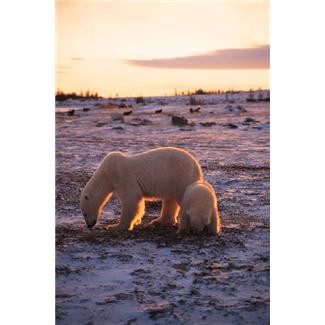
Babies open their eyes about a month after birth, and take their first steps at the age of one and a half months. For the first few months, the cubs are in a snowy den and feed on rich mother's milk. Bear cubs are born completely without hair, but after a while it grows back and becomes thick and dense.
Four-month-old cubs weigh 10 kg each and still suckle their mother (sometimes up to a year), but the bear is already starting to feed the cubs with seal fat. Despite all the efforts of the female, out of three cubs, usually one survives.
With the end of the polar night, the cubs come out of the cramped ice lair with their mother and frolic in the open with pleasure.
Now they can leave the shelter, and no frost will be terrible for them. The bear will teach them to hunt and swim. While they are small, the mother allows them to sit on her back and rides with pleasure, like on a steamboat.
At two years old, a young bear begins to live on its own. At this age, the risk of dying is still quite high, since he is still an inexperienced hunter and often remains hungry.
On the territory of Russia, the polar bear is distributed on the islands of the Arctic Ocean: on Franz Josef Land, Novaya Zemlya, Severnaya Zemlya, the New Siberian Islands and Wrangel Island.
The polar bear prefers to stay among the floating ice or near polynyas, where you can get seals. The largest number of snow dens in which bear cubs are born is located on Franz Josef Land and Wrangel Island. In November - December, she-bears usually bring two cubs. In March-April, the cubs leave the den with their mother. By this time, their weight reaches 10-12 kg. The bear family lasts about two years.
In nature, the polar bear has no enemies. He is quite friendly towards humans. Protecting its prey (for example, a caught seal) or cubs, it can rush at a person, trying to scare him. Loud muttering serves as a warning of possible danger. There are very few actual attacks. For more than 100 years of its development, three people died on Novaya Zemlya for this reason, and there was not a single victim on Wrangel Island.
Acquaintance of a person with a polar bear has a long history. These animals were known to the ancient Romans in the 1st century AD. A written source containing information about polar bears dates back to 880.
In the XII-XIII centuries. Russian settlers who settled on the shores of the White and Barents Seas hunted polar bears, supplied Velikiy Novgorod and Moscow bear skins. Until the bears were hunted by the inhabitants Far North, the damage to the livestock was small.
In the XVII-XVIII centuries. hunting vessels began to regularly penetrate the Arctic seas and the hunt for polar bears began. It increased especially sharply in the middle of the 19th century, when the stocks of bowhead whales were depleted and the attention of miners switched to walruses and bears. At the beginning of the XX century. hunting was conducted on an unusually wide scale.
On Svalbard for 1920-1930. more than 4 thousand animals were mined. According to rough estimates, only in the north of Eurasia since the beginning of the 18th century. until the middle of the 20th century. production amounted to over 150 thousand bears.
Back in the seventies of the last century, polar bears were the object of hunting with impunity in Canada, Greenland, Norway and Alaska.
By the beginning of the 70s. 20th century 5-7 thousand polar bears lived in the Russian sector of the Arctic, and throughout the Arctic their number did not exceed 20 thousand. In 1973, the International Agreement on the Conservation of the Polar Bear was signed. Ten years later, the number of bears increased and amounted to over 25 thousand people.
Around North Pole about 25,000 polar bears live in different flocks, its populations are stable. But they suffer from pollution of the seas and global warming. Today they are protected international agreements, hunting for them is prohibited, and the polar bear itself is listed in the Red Book. The polar bear is also protected in the reserve on Wrangel Island, included in the IUCN-96 Red List and the Red Book Russian Federation.
A sharp warming climate has threatened the existence of the polar bear population off the Hudson Bay in northern Canada. The sea began to freeze a month later, and this prevents them from hunting seals. Hungry bears approach settlements and rummage through garbage dumps.
Studying bears is not easy: they live scattered over large areas, cautious and too dangerous to approach them. Researchers now have effective sedatives. Polar bears, which are aggressive and very mobile, are euthanized from the air: bears are driven onto open ice by snowmobiles, and then arrows with a sedative agent are fired from a helicopter. The stunned animal is measured, examined for scars, teeth imprinted and blood taken. Integument and fat analyzes provide information about the state of his health. In female bears, based on a blood test, you can determine whether she is ready to mate or is already pregnant.
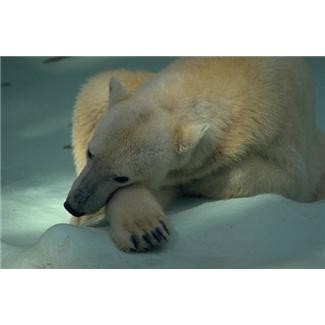
Other data on the life of bears is obtained from paw prints, analysis of wool, dens and droppings, which can be used to determine the type of food. Additional information provide behavioral observations. In this way, it is possible to follow the development of the bear population in a certain area over the years.
Bear trails and sites are surveyed using telemetry. Animals receive radio collars, thanks to which their location can be determined. Many collars are additionally equipped with sensors that record body temperature and movements of animals.
According to them, the researcher can determine whether the bear is resting or active. Every six hours, the exact coordinates of its location are transmitted to the satellite, and from there to the computers of scientists. Many transmitters even send data continuously so that the coordinates they indicate are projected onto a map and the bears' movements can be followed on the screen.
In order to determine the age of a bear, a small, non-functioning tooth in the lower jaw is removed from the euthanized animal.
The teeth of bears form annual circles, like tree trunks. Inside they are made of dentin. The crown of the tooth is covered with tooth enamel, the root is covered with dental cement. To ensure that the tooth always remains firmly anchored in the jaw, the layer of cement is constantly growing throughout the life of the bear. Depending on the season, the growth of cement occurs in different ways: in winter it is slower, at this time only a thin dark layer forms around the tooth. At the beginning of the year and in summer, a wider light layer appears. Both lines form a layer that has grown in one year. The older the bear, the slower the cement grows and the smaller the distance between the annual rings becomes.
Polar bears have been studied quite well: the approximate size of their territories, types of food and mating behavior are known. Scientists were able to observe how mother bears raise their cubs.
Are polar bears threatened by the greenhouse effect?
greenhouse effect and global warming primarily due to the release of gases. Carbon dioxide and other gaseous compounds rise into the high layers of the atmosphere, forming a layer above the Earth that traps heat at the surface of the planet, like in a greenhouse. The consequences are already visible in the Arctic: over the past 100 years, the air temperature there has risen by about 5°C. Square arctic ice is decreasing every year.
Pollution environment is a problem for polar bears. Around oil rigs and oil harbors sea water often contaminated with oil. Thick wool protects well from cold and dampness of polar bears. But oiled wool loses its ability to hold air, so half of its insulating effect is lost. The bear cools down faster, and there is a danger of overheating in the sun. If a bear swallows oil-contaminated water or licks it off its fur while swimming, it will lead to kidney damage, intestinal bleeding and other serious illnesses. In the tissues of polar bears, such harmful substances as chlorinated hydrocarbons were found. They accumulate from food and are deposited in hair, teeth and bones. In the future, harmful substances affect not only health, but also the ability of animals to procreate.
The life of polar bears depends on the presence of ice. Only if in the summer they go to the ice to hunt seals do they manage to accumulate sufficient reserves of fat for the winter. If the ice melts earlier in the summer or crumbles into ice floes, the animals have to return to the mainland, where there is less food. This affects the ability to procreate: bears that eat worse have fewer offspring or none at all. If warming continues at the same pace, then the cover summer ice in the Arctic Sea will disappear by 2080 at the latest. The polar bear will have to adapt to completely different living conditions or face the threat of extinction.

Bears and people
Today, zoos try to provide animals with care appropriate to their species. Zoos play an important role in maintaining endangered species by researching animal habits, educating the public about endangered species, and coordinating breeding programs internationally.
To keep the animals entertained, more and more zoos are developing entertainment programs for their bears. Bears are not couch potatoes at all. In nature, they are constantly busy exploring and looking for food. Animals that cannot satisfy their need for movement often exhibit behavioral disturbances: they stagnate, shake their heads, jump up every now and then, or show the same type of rhythmically repeated movements.
Food is no longer served in a feeder, but is scattered around the enclosures, buried or hidden in hollow trees or under roots.
So the bears have to look for it or catch it with their paws. Balls of straw or hay are filled with food, honey is placed on the very tops. tall trees. Bears love frozen food. For example, carrots, apples and fish carcasses are placed in buckets of water or fruit juice and freeze.
The polar or polar bear is the only one that is classified in most countries (USA, Norway, Greenland and Russia) as marine mammal. The exception is Canada, which currently classifies the polar bear as a land mammals. Polar bears are at the top in the Arctic, where they feed mainly on seals.
According to the latest data from numerous studies, the ancient ancestor of polar bears is Brown bear. Their origin dates back to about 350 thousand-6 million years ago. Unlike their brown relatives who live on land, polar bears are perfectly adapted to survive in the Far North. Exist different populations polar bears. In total, there are 19 species of different subpopulations of polar bears. According to more recent studies, there are four main groups. This classification is based on the features of the place where polar bears live: diverging ice, converging ice, seasonal ice and archipelagos.
The polar bear is the closest relative. Adult males usually weigh between 350 and 600 kilograms. Adult females are smaller - usually their weight is from 150 to 295 kilograms. Polar bears are considered centenarians. AT wild nature they live an average of 15 to 18 years, although biologists have recorded a few 30-year-old individuals. In captivity, some long-lived bears reach 40 years of age. A prime example of this is Debbie, a bear bred in captivity from Canada, who lived to be 42 years old.
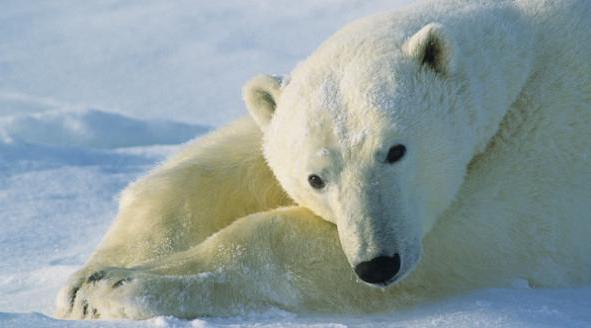
The habitat of the polar bear is his habitat, where he can hunt, get his own food, and breed, building snow lairs for hibernation and protection of cubs. Polar bears are found throughout the Arctic. They most often live in areas where there is a population of ringed seals. The habitat of the polar bear covers the entire circumpolar Arctic.
These large mammals adapted to live in water and on land. Unlike other bears, the polar bear is an excellent swimmer and can sometimes be seen more than 100 miles from land or ice. Currently, more than 40 percent of all polar bears live in Northern Canada, on the ice along the coasts of numerous islands.
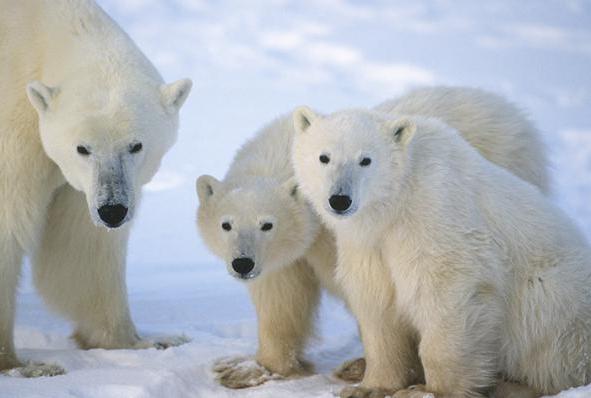
Polar bears are considered a fairly vulnerable species in terms of extinction. In Russia, animals are listed in the Red Book, which includes rare or endangered animals. In the United States, polar bears are listed as an endangered species on the Endangered Species List. Canada believes that they require increased attention within national species under threat. Measures to protect animals are taken at the legislative level.
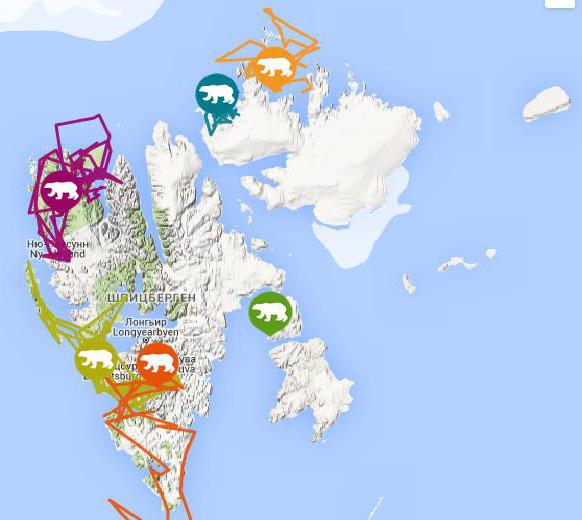 The cause for concern is the loss of habitat due to climate change. Scientists predict that two-thirds of the world's polar bears could disappear as early as this century due to intense ice melting. The study also shows that it is still fixable if measures are soon taken to significantly reduce greenhouse gas emissions into the atmosphere. The places where polar bears live should not be polluted due to the commercial use of the Arctic.
The cause for concern is the loss of habitat due to climate change. Scientists predict that two-thirds of the world's polar bears could disappear as early as this century due to intense ice melting. The study also shows that it is still fixable if measures are soon taken to significantly reduce greenhouse gas emissions into the atmosphere. The places where polar bears live should not be polluted due to the commercial use of the Arctic.
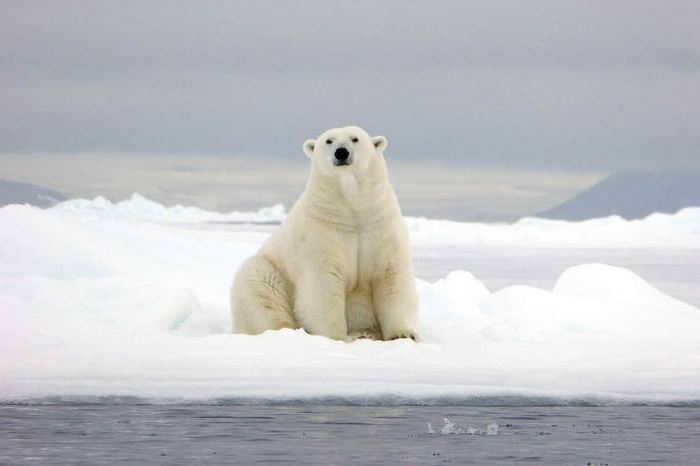
Bears are adapted to arctic climates where temperatures can drop to -45º C in winter. These animals have two insulated layers of fur that help them retain body heat. Besides, in Good times they also have a thick layer of fat. The compact ears and small tail also prevent heat loss. In fact, polar bears have more problems with overheating than from cold, especially when running. An excellent sense of smell helps them to hunt, and their claws can hold prey of 40-90 kg.
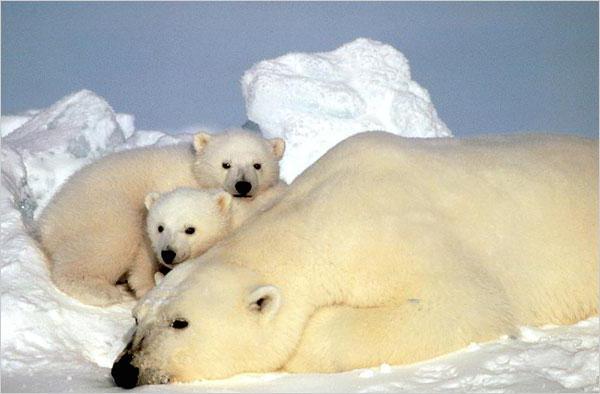
The Arctic deserts serve as the habitat of these furry predators. The polar bear is at the top of the Arctic food chain. In this way, a natural balance is achieved in order to prevent overpopulation of the habitat. When an adult bear is in good shape, the formed fat reserves support the body between meals.
Bears prey on ringed seals, sea hares, baleen whales. These white and fluffy mammals are excellent swimmers: they use their front paws as paddles while their hind legs act as a rudder. In addition, they have a wonderful sense of smell: they can smell their prey from a distance of one kilometer.
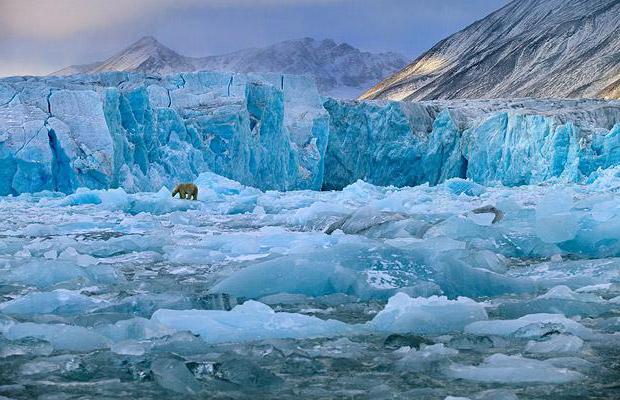
Depending on the condition of the body, females usually reproduce two to three cubs every 4-6 years. As a result, polar bears have one of the slowest reproductive cycles in nature, typically producing no more than five offspring during their lifetime. The habitat of the polar bear allows you to choose a suitable shelter for the birth of cubs. Bear cubs are born in November or December in snow caves called birth lairs.
At birth, babies resemble large white rats, which reach a length of 30-35 centimeters and weigh just over half a kilogram. Blind, toothless and covered in short, soft fur, they are completely dependent on their mother for warmth and food. The cubs grow quite quickly thanks to their mother's high-calorie milk, which is about 31% fat. Baby bears stay with their mother until they are 2.5 years old.
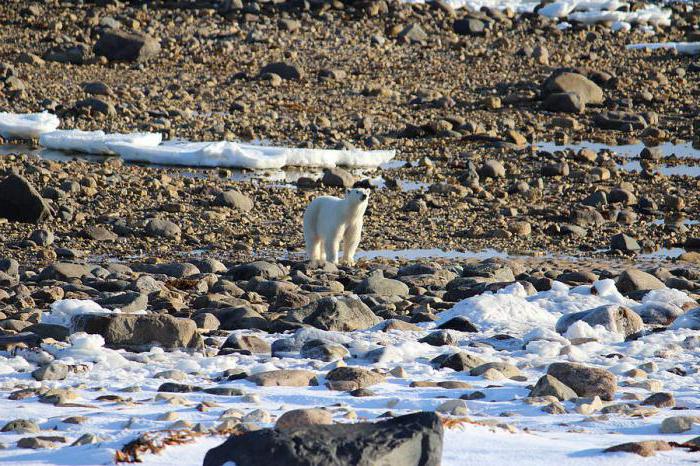
The habitat of the polar bear may change as the animals may make long-distance land and water migrations along continental coasts or islands. Some individuals spend most of the year on land. Most pregnant females spend autumn and winter on the ground in their birth lairs.
The air temperature in the Arctic reaches on average -34°C in winter and 0°C in summer. The coldest zone in winter period is the northeastern part of Siberia, where the temperature drops to -69°C. The warmest areas in the summer are the inland regions of Siberia, Alaska and Canada, where the temperature can reach + 32°C.
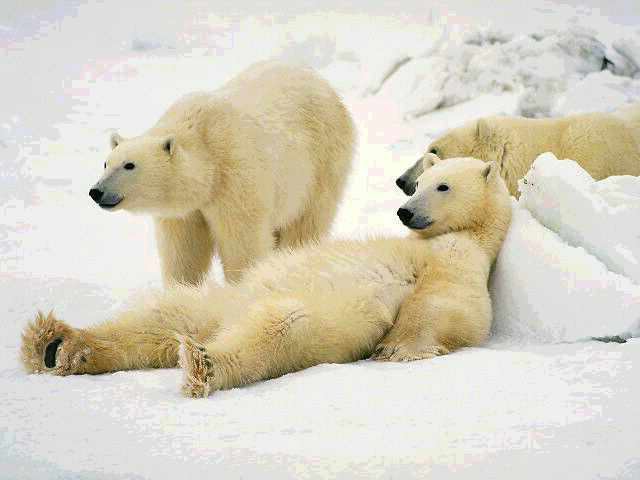
Polar bears, whose habitat is in the northern subpolar regions, are often depicted in illustrations in popular fiction and children's books along with penguins. However, they live at different poles. Polar bears do not live in Antarctica: penguins live there on an ice-covered continent surrounded by oceans, while polar bears live in the Arctic.
Such are they, these amazing animals - polar bears.
The polar bear lives in one of the most remote corners of our Earth. His life takes place in eternal wanderings through the icy expanses of the Arctic.
The Arctic is called North hemisphere of our planet, which includes almost the entire Arctic Ocean and nearby islands (in addition to the Norwegian ones), the margins of the continents of Eurasia and North America, and also covers the adjacent parts of the Pacific and Atlantic oceans. This entire area is the habitat of the polar bear.
Polar bears spend their lives on drifting ice floes. In the summer, the ice begins to melt actively, during this period the polar bears go north. By autumn, when there is more drifting ice, they return to the south. In winter, an immovable strip forms in the zone of drifting ice, along which bears often cross to the land of nearby islands and coasts. At this time of the year, they most often go into hibernation lasting from 50 to 80 days. Favorite places where polar bears arrange their winterings are Wrangel Island and Franz Josef Land. You can also meet a polar bear on the territory of such countries as: Norway, Canada, USA (Alaska), Denmark (Greenland), Russia. 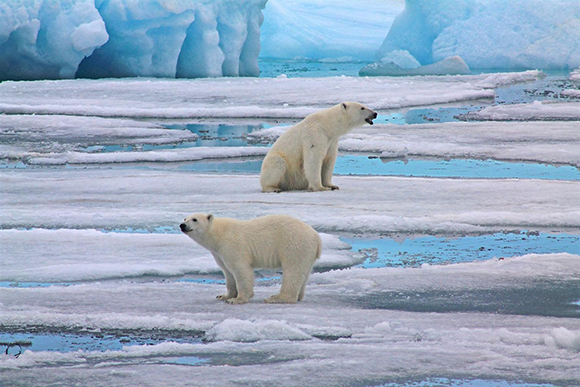
In total, about 20,000-25,000 polar bears live in the Arctic. The largest population of 5,000-7,000 individuals lives in Russia.
The polar bear is a predator. Its main prey in the vast ice expanses are representatives of the local fauna: seals (sea hares, ringed seals), walruses. It is not easy to get food in such conditions, but the predator skillfully copes with this task. Polar bears hunt , using special tactics. They quietly approach the hole and guard near it until the seal emerges to breathe air. When the animal emerges, the bear stuns it, and then immediately pulls it out onto the ice and eats the prey. Only 1 out of 20 such hunts is successful.
In addition to the food obtained as a result of hunting, bears eat carrion, whales washed ashore, narwhals, beluga whales, and fish. Sometimes, if possible, bears attack them. ![]()
In summer, the food of the polar bear becomes quite scarce. He eats berries, fish, algae, eggs of birds and chicks, carrion, lichens. During this difficult time, the bear can lose up to half of its weight.
Sometimes hungry individuals enter the houses of the Eskimos or the warehouses of polar expeditions, where they feast on various food products. Most often, polar bears eat canned food, meat, fish and other food.
Polar bear habitats often overlap with human habitation. In such cases, bears often trade in garbage dumps in search of food.